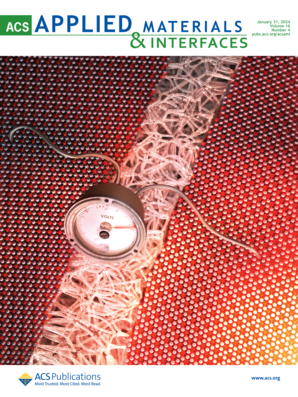可调气泡内的气体封装微胶囊(GEMs)浮力驱动的净化。
IF 8.2
2区 材料科学
Q1 MATERIALS SCIENCE, MULTIDISCIPLINARY
引用次数: 0
摘要
某些水生微生物通过产生细胞内气体囊泡来调节浮力。另外,干旱胁迫下植物的空化现象说明负压是如何自发产生气泡的。受这两种自然现象的启发,我们提出了气泡封装微胶囊(GEMs),结合了这些原理,模仿微生物气体囊泡的浮力调节和植物内部的空化,利用负压形成气泡并控制气泡的大小。GEMs是由聚(d,l-丙交酯-羟基乙酸酯)(PLGA)微胶囊衍生而来,具有水内核和固体聚合物外壳。当微胶囊转移到高渗透压环境中时,会经历一种称为渗透诱导空化的现象。在这种现象中,内部水相经历较大的负压,引发空化,气泡从溶解的空气中成核生长形成GEMs。这种基于空化的方法可以通过简单地调节外部盐浓度来精确地控制气泡的大小。我们证明了这些内部气泡所赋予的浮力可以有效地从杂质中提纯宝石,如聚合物碎片和有缺陷的微胶囊。我们的策略为生成gem提供了一个直接的、可伸缩的和高度可控的方法。它还建立了一种微生物气体囊泡系统的合成类似物,在纯化、超声治疗、胃给药和活性药物的压力响应递送方面具有潜在的应用。本文章由计算机程序翻译,如有差异,请以英文原文为准。
Tunable Gas Bubbles within Gas-Encapsulating Microcapsules (GEMs) for Buoyancy-Driven Purification.
Certain aquatic microorganisms regulate buoyancy by producing intracellular gas vesicles. Separately, cavitation in drought-stressed plants illustrates how negative pressure can spontaneously generate gas bubbles. Inspired by both natural phenomena, we present gas bubble-encapsulating microcapsules (GEMs) that combine these principles, mimicking the buoyancy regulation of microbial gas vesicles and cavitation within plants by leveraging negative pressure to nucleate and control the size of gas bubbles. GEMs are derived from poly(d,l-lactide-co-glycolide) (PLGA) microcapsules with an aqueous core and a solid polymeric shell. Microcapsules experience a phenomenon known as osmosis-induced cavitation when transferred into an environment with high osmotic pressure. In this phenomenon, the internal aqueous phase experiences a large negative pressure, triggering cavitation, where gas bubbles nucleate and grow from dissolved air to form GEMs. This cavitation-based approach enables precise postfabrication control of bubble size by simply modulating the external salt concentration. We demonstrate that the buoyancy imparted by these internal gas bubbles allows for the effective purification of GEMs from impurities, such as polymer debris and defective microcapsules. Our strategy offers a straightforward, scalable, and highly controllable approach for producing GEMs. It also establishes a synthetic analogue to microbial gas vesicle systems with potential applications in purification, ultrasound theranostics, gastric drug delivery, and pressure-responsive delivery of active agents.
求助全文
通过发布文献求助,成功后即可免费获取论文全文。
去求助
来源期刊

ACS Applied Materials & Interfaces
工程技术-材料科学:综合
CiteScore
16.00
自引率
6.30%
发文量
4978
审稿时长
1.8 months
期刊介绍:
ACS Applied Materials & Interfaces is a leading interdisciplinary journal that brings together chemists, engineers, physicists, and biologists to explore the development and utilization of newly-discovered materials and interfacial processes for specific applications. Our journal has experienced remarkable growth since its establishment in 2009, both in terms of the number of articles published and the impact of the research showcased. We are proud to foster a truly global community, with the majority of published articles originating from outside the United States, reflecting the rapid growth of applied research worldwide.
 求助内容:
求助内容: 应助结果提醒方式:
应助结果提醒方式:


